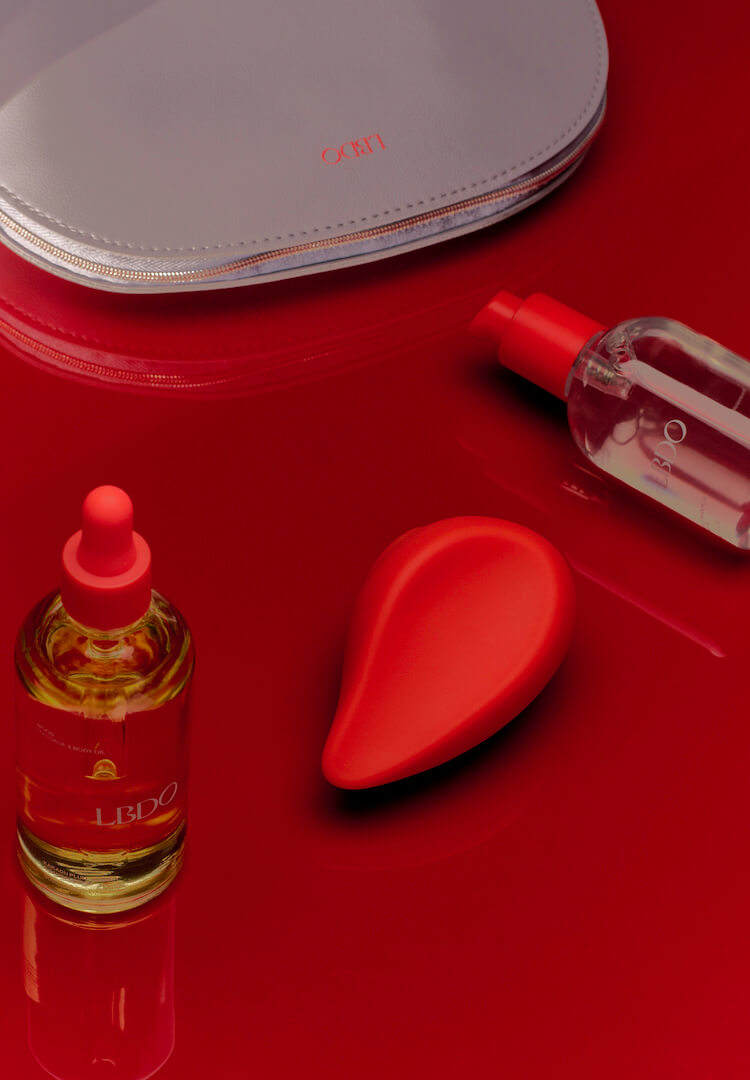What is premenstrual dysphoric disorder and why should I know about it?
WORDS BY EMILY HOLGATE
“I was left with the same feeling I have after a night of drinking too much – think hangxiety, but you can’t blame alcohol for your actions.”
Navigating the world of menstruation was difficult enough when I got my first period at 12 years old. But little did I know the struggles I would endure as an adult, adding sex and relationships into the equation.
I always had PMS around the time of my period, but it was often the more emotional aspect of the syndrome than the physical. I only experienced mild cramps, although I struggled for years with cystic acne (only heightened by PMS). But the main side effect of my menstrual cycle was that it would make me feel – for lack of a better word – crazy.
For more content like this, tap through to our Life section.
When I was 20, I was diagnosed with depression and anxiety, and soon after was prescribed antidepressants. Although they worked wonders for my mental health, I was still displaying neurotic behaviour every time my period was around the corner.
And no, not the quirky, cute quickly-bounce-back-to-my-usual-self kind of behaviour. I’m talking the type of behaviour where I wouldn’t even recognise myself afterwards. I would pick fights with my partner when he had done nothing wrong, and my neuroticism would take over to an extreme point.
When all was said and done, I was left with the same feeling I have after a night of drinking too much – think hangxiety, but you can’t blame alcohol for your actions. I thought of how I had acted and the memory would seem like a bad dream, as opposed to a very real, very painful reality.
So, as it was starting to cause a significant strain on my relationship, I began jotting down each time I had one of these ‘episodes’ to take note of the date. Noticing a monthly pattern, usually in the leadup to my period, I decided to see a doctor. It was then that I learned that I was likely experiencing premenstrual dysphoric disorder (PMDD) – a term I had never heard of before.
The doctor prescribed me the contraceptive pill Yaz, commonly prescribed to treat this disorder. And it worked. Slowly but surely, I started to feel like myself again. Combined with the antidepressants, my anxiety levels significantly decreased and I went back to experiencing only the simple joys of light cramps (and a side of raging hormonal acne) leading up to my cycle.
So what exactly is PMDD? And how is it different from PMS?
Like PMS, PMDD occurs in the weeks or days leading up to your period. Susan Davis, a Professor of Women’s Health at Monash University, says PMDD symptoms are “alleviated within days of menstruating”.
But Susan also explains that PMDD is categorised by specific symptoms, notably “an impaired function in the workplace, an affect on relationships, and also depression, anxiety, mood swings and irritability”.
“It’s a form of PMS, but more about the psychological symptoms. It’s not about bloating or cramps, it’s to do with moods that have to sufficiently interfere with your functionality,” says Susan.
Who can get PMDD?
Susan says PMDD “can affect many women”, but also adds that it’s very difficult to know the actual prevalence. According to non-profit women’s health organisation Jean Hailes, between three to eight per cent of those with PMS are affected. This often overlaps with diagnoses of anxiety and depression.
Jean Hailes also demonstrates that stress levels (if you’re an overthinker like me), psychological state, physical health (eek), genetics and changes in brain chemicals like serotonin can all play a role in triggering PMDD. Smoking is also a risk factor (double eek).
Can PMDD be cured?
For me, taking Yaz daily helped reduce the symptoms of PMDD when it was my time of the month. This is due to the pill’s unique combination of drospirenone (a form of the progesterone hormone released into the ovaries) and ethinyl estradiol (a type of the sex hormone, estrogen).
But there are other contraceptive pills out there as Yaz is a little on the pricey side – around $80 a pop for a three month course. Beyaz, which supplies folic acid and can also be taken to treat acne, is often prescribed to treat PMDD.
Susan says SSRIs like Fluoxetine and Prozac are also sometimes prescribed, or a type of temporary course of antidepressants which are taken “from ovulation until the onset of menstruation”.
Susan also emphasises the importance of therapy, particularly focusing on anxiety, stress levels and mindfulness. “For women who experience [PMDD], it can be very distressing and can interfere with their personal life and functioning,” she says. “It’s important to seek help.”
Susan adds that the most important thing for people who think they have PMDD to do is to keep a diary, and take note of any mood swings or psychological symptoms that may occur in a time you would normally experience PMS.
I think a lot of women, like me, could benefit from knowing more about PMDD, and getting help as opposed to writing the symptoms off as being ‘crazy’ or ‘PMSing’. I know if there was more discourse surrounding this topic when I was struggling, I could have sought help sooner and felt less alone.
For more on PMDD, head here.













